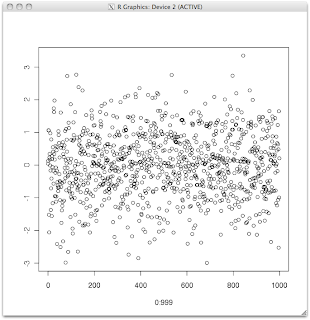
More simple examples from RPy, with an explanation for the failed plot from last time (here).
Notice that addition is like Python list addition, not numpy or R vector addition. In R:
Let's look at a classic R-type list:
Not sure how to do that after the object is created, though we can do it before:
sort looks good but order does not.And last, the problem with the plot was simply that in R the y-labels are suppressed, from RPy we have to do it ourselves: